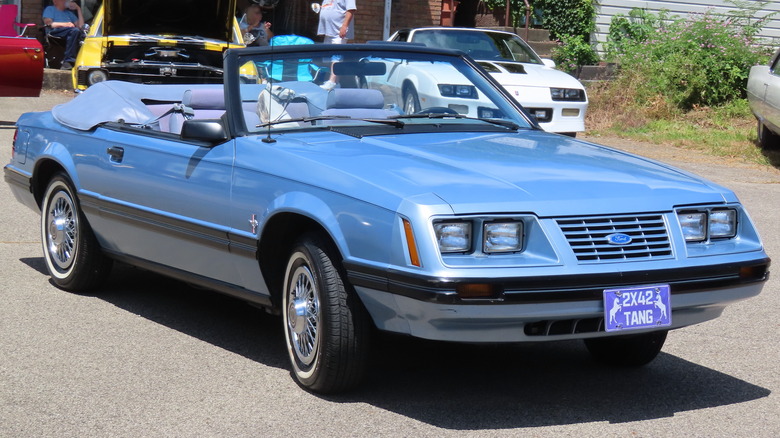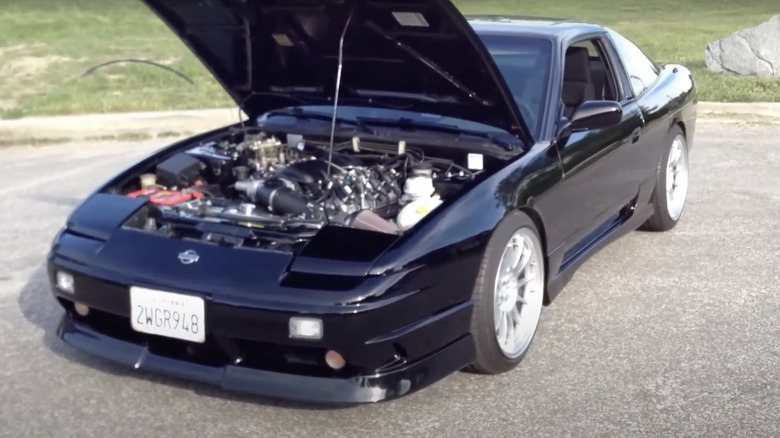5 Classics That Make Perfect LS Engine Swap Candidates
Owning a classic car, truck, or SUV is a largely joyful experience, but there are definite pitfalls that come with the territory. Having a vehicle that is decades old in your driveway or garage often means dealing with mechanical and structural failures, and there might also be routine maintenance that was neglected by previous owners. Unless your classic has already been restored or restomodded, chances are good you might need to consider replacing the engine.
When that time comes, either by choice or necessity, modernizing your classic's powertrain can help improve its power, fuel economy, and reliability. Chevy LS engine swaps have been popular since the LS1 first appeared under the hood of the Corvette in 1997. They're plentiful in salvage yards, replacement and upgrade parts are easy to come by, and the sheer number of existing swaps means there is a huge community of LS enthusiasts to guide you along the way. There are a few things you should know before starting an LS swap project, but these five classics work well for such an endeavor.
[Featured image by Nakhon100 via Wikimedia Commons|Cropped and scaled|CC-By SA 2.0]
LS Swapping a vintage Chevy truck keeps things in the family
Chevy introduced the C and K pickups in 1960 as a replacement for the Task Force Series, which had been around since 1955. Cs were two-wheel drive, while Ks had Chevy's new four-wheel drive system, and the numbers that followed designated each model's capacity. C10 and K10 trucks were half-tons, C20 and K20s 3/4 ton, and the C30 and K30 models were one-ton trucks. These designations stayed in place over four generations until the Silverado and GMC Sierra came around in 1999. The C and K trucks held on through 2002, but by then, they were showing their age.
The first three generations of C and K series trucks that ran through 1987 have large engine bays that give you plenty of room to work, and Holley sells complete LS swap kits for these trucks that make this a relatively painless project. The emphasis is on the "relatively" here, as you should prepare for some busted knuckles and unexpected last-minute expenses during any engine swap.
[Featured image by Sicnag via Wikimedia Commons|Cropped and scaled|CC-By SA 2.0]
An LS-swapped El Camino is about as cool as it gets
The El Camino is only half a pickup truck, but it makes a good LS swap candidate for many of the same reasons as the C and K series trucks. The El Camino was introduced in 1959 and lived through five generations before Chevy ditched the model in 1987. El Caminos, from as early as 1966, were outfitted with big-block 396 cubic inch V8s, meaning there's plenty of room under the hood for even the largest of modern LS V8s. One 1966 El Camino with a 427 cubic inch LS7 swap and several other big upgrades sold for just under $150,000, thanks in part to the modern V8, which produces 625 horsepower. The most powerful stock engine option for the El Camino was the 1970 version's 454-inch LS6 V8, which put out 450 horses and was shared with the Corvette.
Don't be misled by the engine designation, though — Chevy used the "LS" letter pairing for a few years in the early '70s before applying it to the more modern engines in 1997 and later. Like with the C and K series pickups, you can find plenty of aftermarket LS swap parts and kits to make your project go somewhat smoothly. El Caminos are easy to find on the secondhand market, if not necessarily at bargain prices. Classic.com lists nearly 800 sales of the model in the past five years at an average price of a little over $30,000.
LS swapping a Jeep CJ7 gives you big power and fuel economy gains
The Jeep CJ7 has a reputation for being a capable off-roader, but its production run from 1976-1986 predates the bulletproof and efficient 4.0-liter inline six that powered many later Jeep models. If your CJ-7 came with the 4.2-liter six that preceded it, you can make that swap pretty easily. For even bigger improvements in horsepower and fuel efficiency, consider an LS swap for your CJ. Until 1979, CJ7s with automatic transmissions were outfitted with AMC's version of the GM Turbo Hydramatic 400, meaning you can sometimes bolt one to an LS engine with very little fuss. If your CJ has a stick shift like the Tremec T-176, 177, or 178, you will need an adapter to fit most LS engines, but it's still relatively easy to do.
Your shopping list will also include new motor mounts, an exhaust system, and an engine computer and wiring harness. Plenty of other Jeepers have gone the LS swap route, so you will be able to find dozens of forum posts offering moral support and tech tips. Novak Adapters recommends sticking with 6.0 liter Chevy truck engines or the more manageable 4.8 and 5.3 liter LS engines for what it calls "cost and horsepower insanity reasons," but you reserve the right to throw sanity out the open top of your Jeep and use a larger Chevy powerplant; just make sure your transmission, transfer case, driveshafts, and axles can handle the power.
An LS-swapped Fox Body Mustang can be formidable
Some absolute purists regard LS swapping a vehicle from outside the General Motors family as blasphemy, but we've already established ourselves as heretics by including a classic Jeep model on this list. With that in mind, we accept the risk of offending two fanbases by suggesting the Fox Body Mustang as an LS swap recipient. The term is used in reference to the third generation of this classic, which covered the 1979 through 1993 model years. It was built on a smaller and lighter platform than previous Mustangs, but most of the Fox bodies got engines that weren't quite worthy of the Mustang badge. During its run, you could drive off the lot with anything from a 3.3-liter I6 that produced a paltry 89 horsepower to a TQ series 5.0-liter V8 that cranked out as many as 300 horses.
You can easily triple or quadruple the output of the Fox Body's lesser powerplants with an LS swap, and the long nose gives you ample space to fit most LS series V8s. If you're going for maximum power with your swap, you might want to upgrade the Fox body's structural integrity as part of the job. This can mean welding in subframe connectors, upgrading the floor pan, or both. Updating your Tremec T-5 manual transmission with a newer, stronger version should also be on your list. If you want an automatic, consider GM's 4L60E, which is plentiful in salvage yards.
[Featured image by MercurySable99 via Wikimedia Commons|Cropped and scaled|CC-By SA 4.0]
The Nissan 240SX will take an LS with some cash and effort
You don't have to limit your classic LS swap motor pool to American-made vehicles. Our list of weirdest LS swaps includes three Mazdas and a Mini, but none of those were simple projects. Neither is dropping an LS V8 into a Nissan 240 SX, but if you have a healthy budget and a decent supply of patience, consider the joy of driving a sub-3,000-pound car with well over 400 horsepower under the hood. Speed Academy's Peter Tarach started with an LS3 from Chevy Performance and a rebuilt Tremec T56 manual transmission, spending nearly $20,000 on the build pictured above.
He also outlined how you can do this same swap for less than half that by starting with a salvage yard engine and fabricating your own wiring harness, with LOJ Conversions selling bare-bones 240SX conversion kits for under $1,200. Adding a harness and ECU, driveshaft, and/or new fuel pump will bump that cost up but also make your job much easier. If you plan carefully, spend wisely, and take your time, you can end up with a powerful joy to drive in the form of an LS-powered Nissan.





